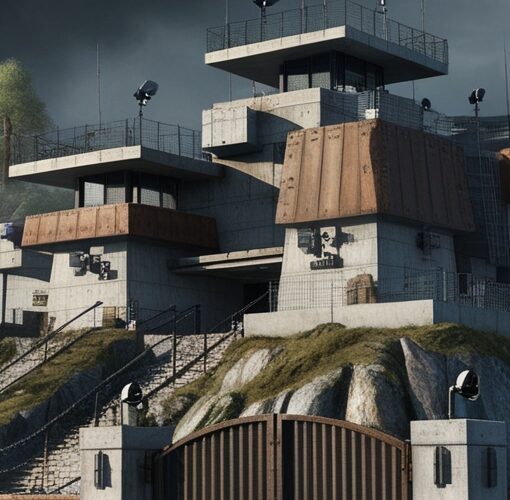Top Takeaways and Key Concepts
- Study your terrain and use natural features like trees, rocks, and tall grass for concealment.
- Wear earth-toned or camouflage clothing to blend into the environment and avoid bright colors.
- Move slowly and quietly to reduce noise and avoid drawing attention.
- Use natural cover strategically and be mindful of wind direction to avoid leaving scent trails.
- Create distractions when necessary to safely escape wildlife or threats without being detected.
Summary of This Article
Please Note: This post may contain affiliate links. If you click one of them, we may receive a commission at no extra cost to you. As an Amazon Associate, I earn from qualifying purchases.
This article explains how staying hidden in the wild can be a valuable survival skill for avoiding danger, wildlife, or unwanted attention. It emphasizes knowing your terrain and using natural cover effectively while adapting to seasonal changes in the environment. The article also highlights the importance of wearing camouflage or neutral clothing to blend in and moving slowly to avoid making noise. It discusses practical survival tactics like using rocks, bushes, and tree lines for cover, staying aware of wind direction, and creating distractions to safely escape threats. Finally, it stresses the importance of awareness and staying alert to changes in your surroundings to prevent danger before it happens.
Short Video Version of this Article
In the wild, being able to stay hidden can be the difference between life and death. To stay safe from predators or just to enjoy some peace and quiet while camping, you need to learn how to be invisible.
I recall one time when I was camping with friends and we thought it would be fun to play hide-and-seek in the woods. We had no idea that the ways we “hid” may also work in real-life survival circumstances! So, let’s look at how you might blend in with your surroundings and be almost impossible to find.

Getting to Know Your Surroundings
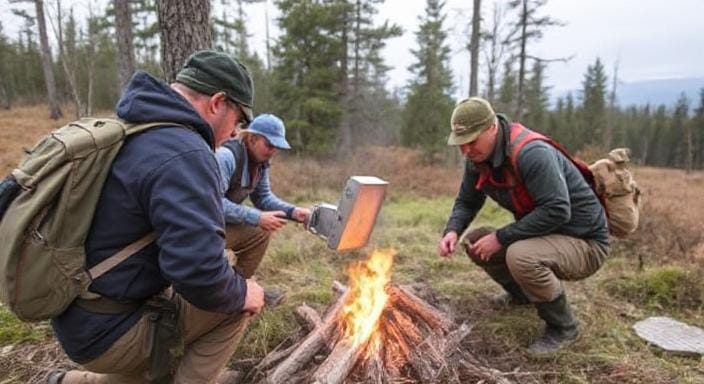
First and first, it’s important to understand your surroundings. There are different types of terrain, such thick forests and wide fields. Last summer, when I was going through a really dense forest, I learned how important it was to know what kind of cover I had.
For instance, tall grass might be an excellent place to hide during the day, but it doesn’t work as well at night when it’s harder to see. Tree lines, on the other hand, are great places to hide, but they can make it hard to move if you need to get away quickly. If you carefully look about, you’ll be able to figure out where you can hide well.
Also, think about how the seasons change! When trees are barren in the winter, they show more than when they have leaves in the summer, which act as natural camouflage. Have you ever noticed that colors look vary depending on the time of year? Knowing these things can help you find the best places to hide according on the present situation.
Making Smart Choices About Your Clothes
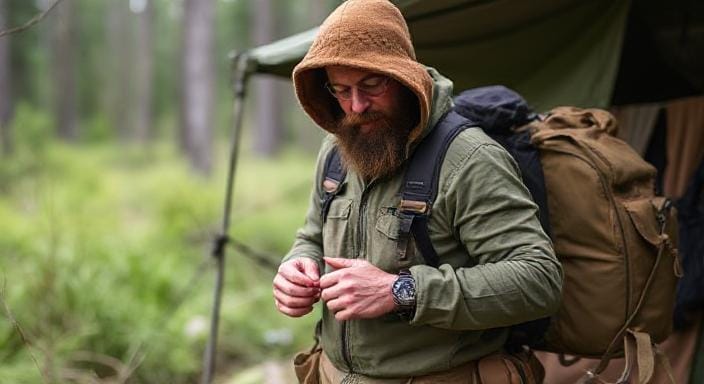
Let’s speak about clothes because believe me, what you wear is important! If you wear bright orange jackets and other bright colors, you’ll get more attention than a raccoon at a picnic. Instead, choose hues that go well with nature, like greens, browns, and grays. They work great! If you truly want to trick the animals, you can even acquire some camouflage clothes.
I packed a lot of bright gear for my first solo camping trip since I thought it looked great. But after being seen by passing hikers several times because of my bright red shirt (seriously?), I learnt that it’s more vital to fit in than to look good.
Also, consider about the fabrics you choose! Cotton and other natural fibers may not dry quickly when wet, but they are usually quieter than synthetic fibers, which make a lot of noise when you move. When you’re attempting not to be seen, wearing layers is a good way to keep the noise down and maintain your body temperature.
Learning How to Move Well
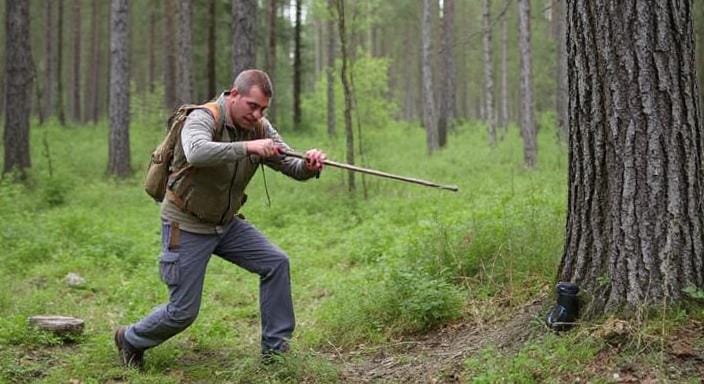
Now that you’ve picked out the right clothes, let’s talk about how to move without being seen or heard. This step is very important because even if you look like you’re hiding properly, if you stomp around like an elephant on roller skates, you’ll still give away where you are.
One thing that has helped me is to walk softly on level surfaces or wear shoes with soft soles whenever I can. You’d be surprised at how much noise normal boots create compared to lightweight sneakers or even going barefoot (if it’s safe!).
Another trick? Don’t rush from one place to another; instead, move slowly and carefully. Quick movements catch attention! When you’re stalking through brushy or rocky places where sound travels well, as near rivers, take short steps and stop often so that anyone who might be watching doesn’t see anything strange going on nearby.
Using Natural Cover
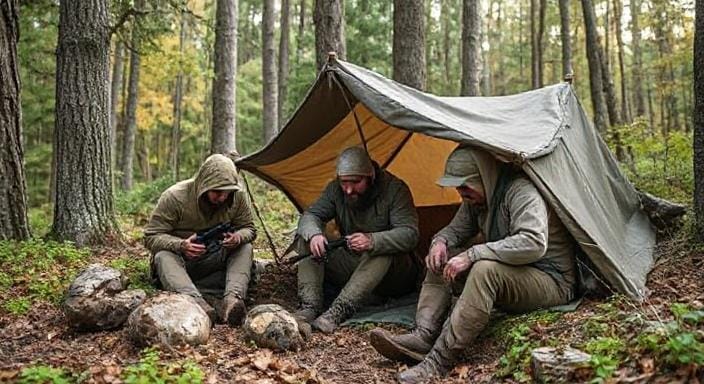
Nature gives us plenty of places to hide; it’s up to us to use them wisely! For example, big rocks can be great screens against inquisitive eyes, and thick underbrush can be great places to hide in a matter of seconds if you need to.
While I was out on my previous excursion, which took me up some rough cliffs with a view of a valley below, a friend jokingly called me “the rock ninja” since I would disappear behind big rocks if someone came near.
The key is to be aware of possible cover before you need it. For example, you should be able to see which trees have low branches that you can duck beneath or where you can hide under roots if you need to.
When using natural cover, it’s also a good idea to always be conscious of the wind direction. Avoiding smell trails left behind by animals helps you stay hidden and makes sure that no unwanted guests find you!
Making Distractions When Needed
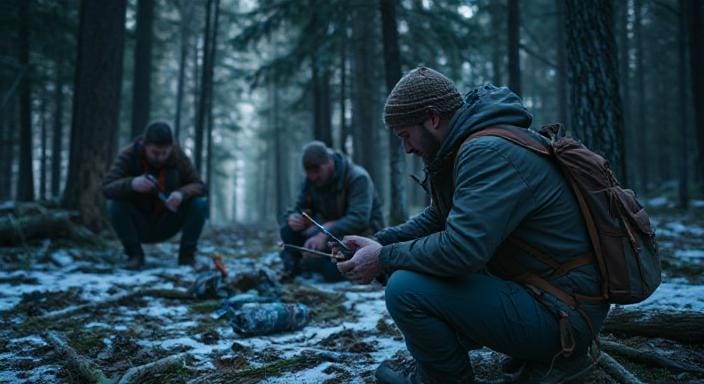
Even when we try our hardest to be stealthy, we may still find ourselves in a tight spot with bigger risks, including wildlife. That’s where making distractions comes in handy as a technique to get out of tough spots without bringing notice to yourself!
One night while camping alone, I ran into a bear that was too interested. It wasn’t fun, let me tell you! I was lucky that I recalled what I learned in training about tossing rocks away from me and toward bushes nearby. This made the animal look away long enough for me to sneak back to safety without getting hurt!
This rule works in many situations, from scaring off annoying squirrels that are stealing food to protecting us from bigger predators that might accidentally find our campfire gatherings. Instead of coming to investigate noises made elsewhere, they’ll often stay away, giving us the time we need to regroup safely!
Getting Better at Being Aware of Your Surroundings
Lastly, and maybe most crucially, being aware of our surroundings when we’re outside helps us learn how to avoid danger naturally over time.
Being aware of your surroundings lets you see any dangers early on, before they turn into problems that need to be dealt with right away. Trust me, it saves a lot of trouble in the long run!
I always inspect the skies above and the ground below every few minutes when I’m outside, whether I’m hiking alone or spending time with family or friends.
Listening and roaming freely together, making memories that will last a lifetime and sharing stories over the fire!
Frequently Asked Questions
1. Why is staying hidden an important survival skill in the wild?
Staying hidden can protect you from dangerous wildlife, hostile people, or unwanted encounters. It helps you avoid detection, stay safe, and observe your surroundings without giving away your position.
2. What type of clothing is best for camouflage outdoors?
Earth-toned colors like brown, green, and gray work best. Camouflage patterns also help, and quiet fabrics like cotton or wool are better than noisy synthetic materials.
3. How can I move without being detected in the wilderness?
Move slowly and deliberately, avoid sudden movements, and use soft steps. Walk on natural surfaces like soil or moss rather than dry leaves or twigs that make noise.
4. What natural features are best for concealment?
Use trees, bushes, tall grass, rock formations, and terrain dips to hide your body shape. Stay low and avoid open areas whenever possible.
5. Why should I pay attention to wind direction while hiding?
Wind can carry your scent to animals or people. Staying downwind reduces the chance of being detected by scent-sensitive wildlife like bears or wolves.
6. How can distractions be used for survival?
Distractions like throwing rocks or making noise away from your location can lure predators or threats away, giving you time to move or escape safely.
7. How does situational awareness help with staying hidden?
Being aware of your environment helps you spot dangers early, plan safe hiding spots, and avoid being surprised. Regularly scanning your surroundings keeps you one step ahead of threats.
Suggested Resources:
Survival Skills: 10 Tips for Staying Hidden
https://www.survivalskills.com/tips-for-staying-hidden
How To Choose the Right Camouflage
https://www.camouflageguide.com/choosing-right-camouflage
The Art of Movement in Nature
https://www.naturemovement.com/art-of-movement

Kevin Collier is a seasoned outdoor enthusiast and writer for Trekbug.com, specializing in outdoor adventures, survival strategies, and prepping insights. With a deep love for nature and a commitment to self-sufficiency, Kevin empowers readers to embrace the wilderness confidently. He shares valuable tips, practical techniques, and inspiring stories, helping both novice and experienced adventurers develop essential skills for surviving and thriving in the great outdoors.




